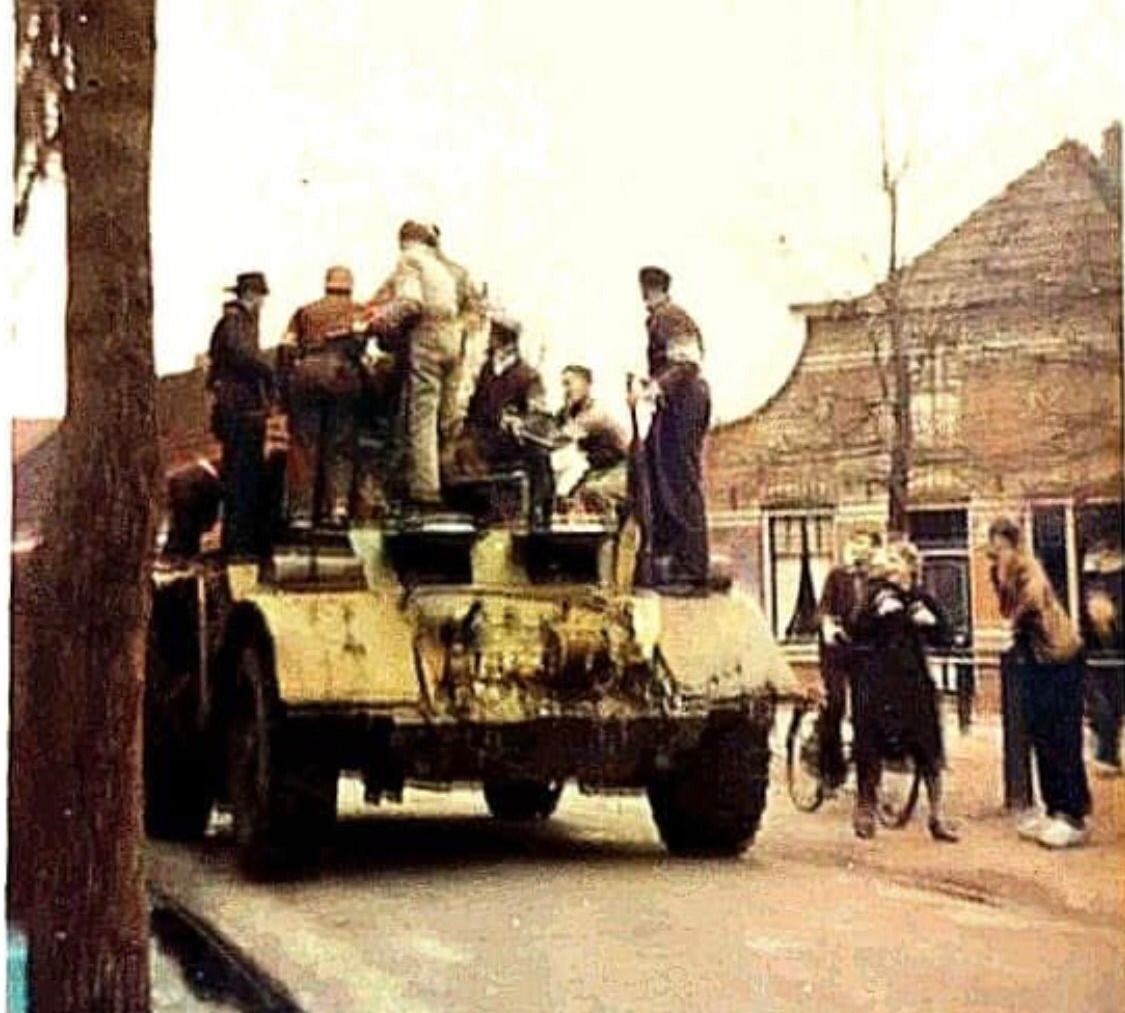In spring 1943, Widow Grevink was asked if she could take in a few people. She lived with her daughter Marietje on Brinkstraat in Den Ham, where she ran a boarding house. She first sheltered the newly married Jewish couple, Cohen, and later Mrs. Cohen’s sister. Shortly before liberation, four more people came into hiding with her. A wall cupboard was turned into a sliding closet, behind which the people in hiding could conceal themselves in case of a house search. In autumn 1943, tensions in Den Ham increased. The patriotic mayor was dismissed after making remarks that displeased the German occupiers. Den Ham got an NSB (Dutch Nazi Party) mayor, who moved into the house of his predecessor, making him the new neighbor of Mrs. Grevink. A dangerous situation, especially since German soldiers were quartered in the building directly across the street.
Life in Den Ham remained relatively calm until February 1944. It changed when Jan Willem van der Tuin had, in the preceding months, managed to infiltrate the local resistance. With a convincing story, he presented himself as a fugitive resistance fighter, but in reality, he was a spy and an informant for the Sicherheitsdienst (SD). At the end of January 1944, after the Den Ham resistance had helped raid the local distribution office, Van der Tuin decided it was time to hand over the names of the group to the SD. On the night of Saturday 5 to Sunday 6 February 1944, a large-scale raid took place. In Den Ham and elsewhere, homes were raided and resistance members arrested.
One of them was Hendrik de Ruiter at Molenstraat 25 in Den Ham. His home, where he lived with his wife Gerritje de Ruiter-Hekman, was one of the places where Van der Tuin had previously posed as a hidden fugitive, only to return later as a traitor. Their house was also the main meeting point where the resistance planned and prepared its actions.
In this way, Van der Tuin gathered the information needed to dismantle the resistance group. A house search was also carried out at Mrs. Grevink’s boarding house, but nothing was found, and no one was arrested. The Germans were looking for dentist Bouwman, who was on Van der Tuin’s list, known to distribute illegal newspapers and distribute weapons within the resistance.
Not only men, but also several women in Den Ham were active in the resistance, often as couriers. Many worked together with their husbands, several of whom – because of Van der Tuin’s betrayal – perished in German concentration camps shortly before liberation. Hendrik de Ruiter was one of them. The traitor himself escaped justice. Though sentenced to death in 1947, he never served his sentence because he managed to escape.
On 6 April 1945, Den Ham was liberated from German occupation. This was a huge relief for Mrs. Grevink, who, in a 1976 interview given on the occasion of her Yad Vashem award, said that on that liberation day, she slept peacefully for the first time in two years.
